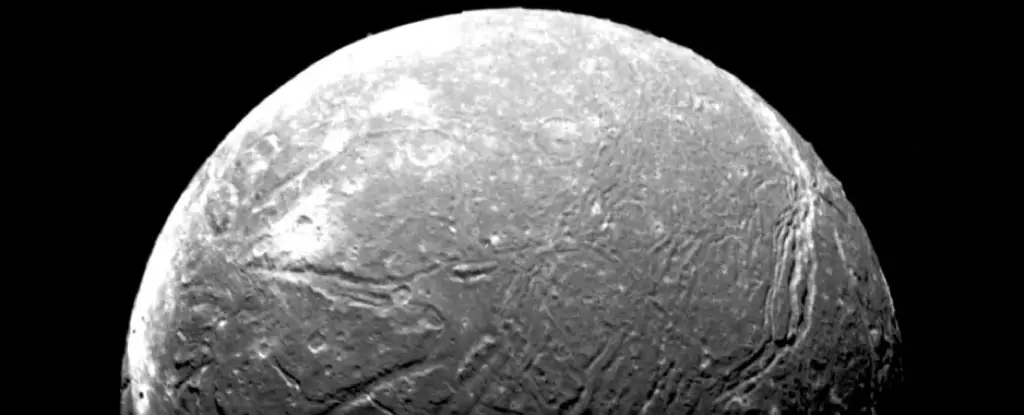Venus and Mars have long been studied for their unique characteristics, but the outer planets and their moons also hold fascinating secrets. Recent observations from the James Webb Space Telescope have shed light on Ariel, a moon of Uranus, and its potential underground ocean.
Ariel, one of Uranus’s five moons, was discovered in 1851 by William Lassell. Its icy surface and diverse geological features make it a subject of interest for astronomers and researchers alike.
The surface of Ariel is a mix of canyons, ridges, faults, and valleys driven by tectonic activity. Cryovolcanism plays a significant role in resurfacing, giving Ariel the brightest surface among Uranus’s moons.
Recent observations from the James Webb Space Telescope have detected significant amounts of carbon dioxide ice on Ariel’s surface, particularly on the trailing hemisphere. This discovery has puzzled researchers due to the distance of Uranus from the Sun, where carbon dioxide is expected to turn into a gas.
Previous theories suggested that interactions with charged particles in Uranus’s magnetosphere were responsible for the carbon dioxide on Ariel’s surface. However, spectral analysis from JWST revealed that Ariel has some of the most carbon dioxide-rich deposits in the solar system, along with signals of carbon monoxide.
Researchers now believe that the carbon dioxide and other deposits on Ariel’s surface are replenished by a subsurface ocean. Signals from carbonate minerals indicate the interaction between rock and water, further supporting the existence of an underground ocean on Ariel.
While the findings from JWST have provided valuable insights into Ariel’s composition, a future space mission to Uranus is needed to confirm the presence of a subsurface ocean. By exploring the moons of Uranus up close, researchers can uncover the origins of the carbon oxides on Ariel and gain a deeper understanding of this enigmatic moon.
Ariel, a moon of Uranus, holds the potential for a hidden ocean beneath its icy surface. The discovery of carbon dioxide ice and other deposits point to the presence of a subsurface ocean, making it a fascinating subject for future exploration and research. As we continue to unravel the mysteries of our solar system, moons like Ariel provide invaluable insights into the dynamic and complex nature of celestial bodies beyond Earth.


Leave a Reply